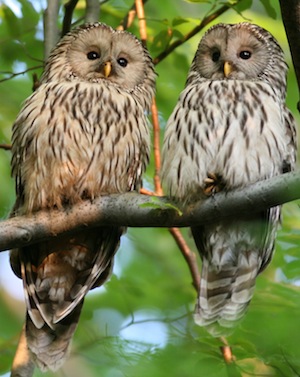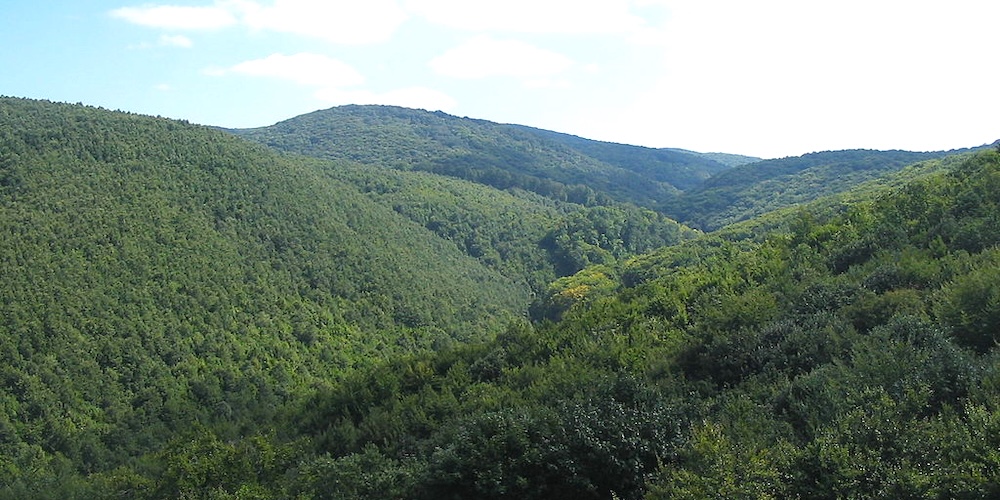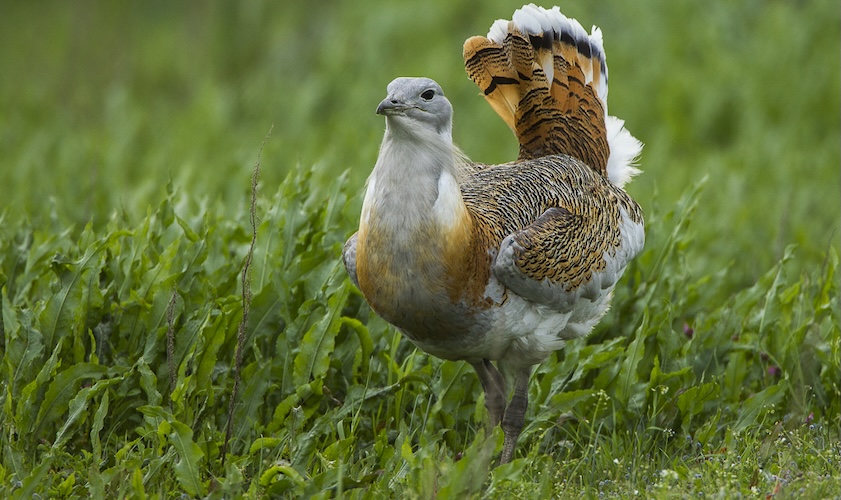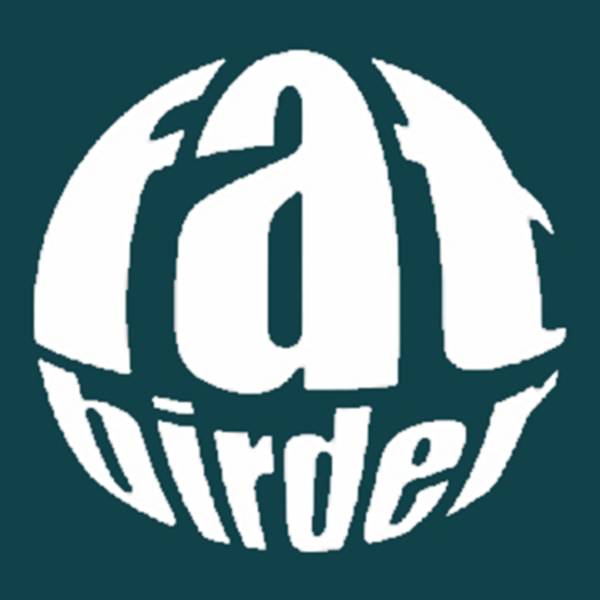Hungary

Hungary is a landlocked country in Central Europe with an area of over 93,000 km2 (just under 36,000 square miles). Spanning much of the Carpathian Basin, it is bordered by Slovakia to the north, Ukraine to the northeast, Romania to the east and southeast, Serbia to the south, Croatia and Slovenia to the southwest, and Austria to the west. It has a population of over 9.6 million, consisting mostly of ethnic Hungarians and a significant Romani minority. Hungarian is the official language, and among the few in Europe outside the Indo-European family. Budapest is the country’s capital and largest city with around 1.8 million people, and the dominant cultural and economic centre.
Hungary’s geography has traditionally been defined by its two main waterways, the Danube and Tisza rivers. The common tripartite division is into Transdanubia (“beyond the Danube”); Tiszántúl (“beyond the Tisza”), and Duna-Tisza köze (“between the Danube and Tisza”). The Danube flows north-south through the centre of Hungary, and the entire country lies within its drainage basin and is dominated by great lowland plains.

Tisza River – ©Derzsi Elekes Andor CC BY-SA 3.0 via Wikimedia Commons
Transdanubia, which stretches westward from the centre of the country towards Austria, is a primarily hilly region with a terrain varied by low mountains. These include the very eastern stretch of the Alps in the west of the country, the Transdanubian Mountains in the central region of Transdanubia, and the Mecsek Mountains and Villány Mountains in the south. The highest point of the area is the Írott-kő in the Alps, at 2,894 feet. The Little Hungarian Plain is found in northern Transdanubia. Lake Balaton and Lake Hévíz, the largest lake in Central Europe and the largest thermal lake in the world, respectively, are in Transdanubia as well. The Duna-Tisza köze and Tiszántúl are characterised mainly by the Great Hungarian Plain, which stretches across most of the eastern and southeastern areas of the country. To the north of the plain are the foothills of the Carpathians in a wide band near the Slovakian border. The Kékes at 3,327 feet, the tallest mountain in Hungary, is found there.
Phytogeographically, Hungary belongs to the Central European province of the Circumboreal Region within the Boreal Kingdom. According to the WWF, the territory of Hungary belongs to the terrestrial ecoregion of Pannonian mixed forests.

Heavily Wooded Mecsek Mountains – ©Cserlajos CC BY-SA 2.5 via Wikimedia Commons
Hungary has a temperate seasonal climate with generally warm summers with low overall humidity levels, but frequent rain showers and cold snowy winters. Average annual temperature is 9.7 °C. Average high temperature in the summer is 23 to 28 °C and average low temperature in the winter is −3 to −7 °C. The average yearly rainfall is just under 24 inches.
Birding Hungary
Hungary, like much of central Europe has cold winters and warm summers as the climate is profoundly affected by the continental landmass. Although it was always among the most developed and affluent of the old soviet block it is still relatively under developed and agricultural practices have not yet been so intense as to ruin the land’s potential for wildlife. The birds, which were once familiar all over European farmland, still thrive including Turtle Doves and Tree Sparrows, Corn Buntings and Red-backed Shrikes, White Storks and Hoopoes. A supporting cast of Golden Orioles, Bee-eaters and Serins are a delight to birders from the UK.

Great Bustard Otis Tarda at Hortobagy – ©Francesco Veronesi CC BY-SA 2.0 via Wikimedia Commons
For a one-day trip the Kiskunsag area is the best. This is similar to Hortobagy, but smaller, there is puszta, fish-ponds, alkaline lakes, marshes, etc. It is close enough for an outing from Budapest, but you can find an interesting variety of birds including some of the ‘specials’ such as Great Bustard, Red-footed Falcon, Golden Oriole, European Bee-eater and Roller as well as a variety of herons, egrets, wildfowl, passerines, etc.
The most interesting areas, from the birders point of view, include the Puszta and the wooded Bukk Hills. The former is the remnant of the great grassy steppes formerly used to run cattle – notably Hungarian Grey Cattle. These grassy areas are still home to the highest densities of Red-footed Falcons and Eastern Imperial Eagle in Europe and high populations of Great Bustard and Aquatic Warblers. The most well-known area being Hortobagy, although it is not the only area of Puszta left, and is also renowned for its Autumn accumulation of Common Cranes by the thousand. The Bukk Hills and surrounding copses, villages, farmlands are home to Wryneck and all but one of the species of European Woodpecker. The woodlands are alive in spring with Hawfinches and Collared Flycatchers and, if you are lucky you may spot a day-flying Ural Owl. Ponds, lakes, marshes and fishponds abound and are home to the three marsh terns, many wildfowl, and sought-after passerines such as Bluethroats, Penduline Tits and Savi’s Warbler, as well as other goodies such as Pygmy Cormorant, Night Heron and the like.

Merzse Marsh Nature Reserve – ©Globetrotter19 CC BY-SA 3.0 via Wikimedia Commons
Also, for a one-day trip the Buda hills, Börzsöny hills and their locale offer some good birding. Woodpeckers (sometimes White-backed), passerines, including Hawfinches, raptors, etc. For the Cranes (in top years there can be more than 100.000 birds) autumn, and mainly the month of October is the best.
What is more, Hungary remains a relatively cheap destination with low cost accommodation and restaurants and a pleasant landscape of neat villages and attractive farms, good wine and bird friendly people with no tradition of hunting of small birds. The woodpeckers alone are sufficient reason to take a trip here.
Fatbirder can attest that the sight of wild wetlands covered in blooming marsh marigolds as a backdrop to thousands of Ruff displaying in breeding plumage is one of the great sights of the birding world.
-
Number of bird species: 441
(As at April 2025)National Bird: Great Bustard Otis tarda
-
Avibase
PDF ChecklistThis checklist includes all bird species found in Hungary , based on the best information available at this time. It is based on a wide variety of sources that I collated over many years. I am pleased to offer these checklists as a service to birdwatchers. If you find any error, please do not hesitate to report them. -
E-Bird
PDF ChecklistThis checklist is generated with data from eBird (ebird.org), a global database of bird sightings from birders like you. If you enjoy this checklist, please consider contributing your sightings to eBird. It is 100% free to take part, and your observations will help support birders, researchers, and conservationists worldwide. -
Hungarian Birdwatching
Annotated ListAccording to the Nomenclator Avium Hungariae (An Annotated List of the Birds of Hungary) there are 398 species recorded in Hungary. On our website we followed the numbering and taxanomy of this this indispensable, comprehensive study. -
Wikipedia
Annotated ListThis is a list of the bird species recorded in Hungary. The avifauna of Hungary included a total of 397 confirmed species as of 2022, according to Hungarianbirdwatching.com.
-
Birds of Europe, North Africa, and the Middle East
| Photographic Guide | By Frédéric Jiguet & Aurélien Audevard | PUP | 2017 | Paperback | 447 pages, 2200 colour photos, colour distribution maps | ISBN: 9780691172439 Buy this book from NHBS.com -
Collins Bird Guide
| By Lars Svensson | Harper Collins | Edition 3 | 2023 | Paperback | 478 pages, 4000+ colour illustrations, 700 colour distribution maps | ISBN: 9780008547462 Buy this book from NHBS.com -
Finding Birds in Hungary
| By Dave Gosney | Easybirder | 1993 | Paperback | 32 pages, b/w maps | ISBN: 9781907316074 Buy this book from NHBS.com -
Finding Birds in Hungary
| By Dave Gosney | Easybirder | 2015 | Paperback | 36 Pages, Maps | ISBN: 9781907316531 Buy this book from NHBS.com -
Finding Birds in Hungary
| By Dave Gosney | Easybirder | DVD | Dec 2015 | 73 Minutes | ISBN: 9781907316548 Buy this book from NHBS.com -
Magyarország Ragadozó Madarai (Birds of Prey of Hungary)
| By Papp Gábor, Kovács András & Turny Zoltán | Magánkiadás | 2016 | Paperback | 200 pages, 300+ colour photos, b/w illustrations, colour distribution maps | Out of Print | ISBN: 9789631234978 Buy this book from NHBS.com -
Nomenclator Avium Hungariae
| An Annotated List of the Birds of Hungary | By Tibor Hadarics & Tamas Zalai | Ministry for Environment, Institute of Ornithology | 2008 | Hardback | 278 pages, no illustrations | ISBN: 9789638641878 Buy this book from NHBS.com -
The Birds Of Hungary
| By Gerard Gorman | Christopher Helm | 1996 | Hardback | 192 pages, 50 line drawings, 363 maps | Out of Print | ISBN: 9780713642353 Buy this book from NHBS.com

Collins Bird Guide
AndroidThe Collins Bird Guide App provides everything you need to identify a species quickly and learn about it thoroughly.
Collins Bird Guide
Apple iOS |Collins Bird Guide 4+ A field guide to Europe NatureGuides Ltd. Designed for iPadObservatories-
Hungarian Bird Ringing Centre
Observatory WebsiteSatellite View1121 Budapest, Költ ő u. 21. Tel.: (+36-1) 391-1772 ▪ Fax: (+36-1) 275-6267 ▪ E-mail: ringers@mme.hu
Organisations-
BirdLife Hungary (Magyar Madártani és Természetvédelmi Egyesület)
WebsiteSocial support of nature protection, with the focus on bird conservation. -
Birding.hu
WebsiteThe objective of birding.hu is to provide quick, helpful information to field-birders in Hungary. Our aim is to give quality information in hopes of improving field-birding, so anyone anywhere can get up-to-date news about interesting birds. Aside from anything in connection with birding (pictures, expositions of areas and groups, news, trip reports, links, classified ads etc) that can be presented on our site, we welcome suggestions -
Hungarian Ornithological & Nature Conservation Society
Facebook PageIts mission is to protect wild birds and help preserve biodiversity. It has about 10,000 members, employs 26 staff, and is the Hungarian partner organisation of BirdLife International. Since 1991 it has published the journal Ornis Hungarica. -
Hungary Rarities Committee
WebsiteComprehensive lists of Hungarian avifauna plus rarity submissions etc.
Reserves-
*Protected areas of Hungary
InformationSatellite ViewInteractive links to 10 national parks, 35 landscape protection areas and 145 minor nature reserves. -
NP Aggtelek
InformationSatellite ViewAnimals present in the Aggtelek National Park included the fire salamander, hucul pony, common buzzard, eastern imperial eagle, European copper skink, white-throated dipper, red deer, Eurasian lynx, gray wolf, wild boar, crested tit, goldcrest, Eurasian bullfinch, hazel grouse, common kingfisher, red-backed shrike, old World swallowtail, scarce swallowtail and the saga pedo. -
NP Bükk
InformationSatellite ViewMountainous and forested, Bükk is Hungary's largest national park and is situated in the northern mountains, between Szilvásvárad and Lillafüred. -
NP Danube-Drava
InformationSatellite ViewDanube-Drava National Park was founded in 1996 and is located in the south west of Hungary. The current area is 490 square kilometres and the majority of the national park sites are located within the Danube and Drava floodland areas, of which 190 km² are Ramsar wetlands. -
NP Fertő-Hanság
InformationSatellite ViewThe area gives home to various kinds of birds, like the great egret, purple heron, common spoonbill and greylag goose. During the migration season species of the family Scolopacidae appear. Rare birds include red-breasted goose, white-tailed eagle and hen harrier. The lake is inhabited by weatherfish, northern pike and ziege. On the meadows west from the lake vegetation of rare plants like the yellow lady's slipper, fly orchid, the Hungarian iris and Iris pumila and various butterfly species can be found, while the eastern puszta areas are covered by Puccinellia peisonis, Aster tripolium, A. pannonicum and Suaeda maritima. -
NP Hortobágyi
InformationSatellite ViewThe Hortobágy is Hungary's largest protected area, and the largest semi-natural grassland in Europe. It provides habitat for various species including 342 species of birds. The red-footed falcon, stone curlew, great bustard and aquatic warbler are represented by breeding populations. The area is an important stopover site for migrating common cranes, dotterels, and lesser white-fronted geese Hungarian website: http://www.hnp.hu/ -
NP Kiskunság
InformationSatellite Viewhe park covers an area of 570 km2 and stretches across the Little Cumania (Kiskunság) region of the Great Hungarian Plain. The alkali lakes of the Little Cumania are found near Fülöpszállás and Szabadszállás. Their unique flora and fauna are of special value. Avocets, geese and black-winged stilts nest in the area. The lakes provide a temporary home for tens of thousands of migratory birds. This ornithologist paradise is also a UNESCO biosphere reserve. -
NP Körös-Maros
InformationSatellite ViewThe park was created in 1997 for the protection of birds. Körös-Maros National Park has a number of regions such as Kis-Sárrét swamp, Fáspuszta, Mágor-puszta or Kardoskúti Fehértó. It features a bustard reserve established in 1975. The major towns of the area are Szarvas and Dévaványa. -
NR Sas Hill
InformationSatellite ViewThe Sas-hegy Nature Reserve belongs to the Danube-Ipoly National Park. The 30 acres (120,000 m2) area on the top of the hill was placed under protection in 1958. It was one of the first nature reserves of Hungary, protecting the limestone landscape and its special flora and fauna. Hungarian website here: http://www.dunaipoly.hu/hu/helyek/vedett-teruletek/adonyi-termeszetvedelmi-terulet/budai-sas-hegy-tt -
Wetlands
WebpageSatellite ViewHungary currently has 29 sites designated as Wetlands of International Importance
Sightings, News & Forums-
Birding.hu
News & SightingsEnglish version of latest sightings
Guides & Tour Operators-
BirdFinders
Tour OperatorHungary’s wonderful mix of habitats include the forests and great plain in the bird rich Kiskunság and Hortobágy regions where we will look for Pygmy Cormorant, Little Crake, Lesser Spotted and Eastern Imperial Eagles, Great Bustard, Eurasian Eagle-owl, Ural Owl, nine woodpecker species... -
BirdQuest
Tour OperatorHUNGARY’S HORTOBÁGY IN AUTUMN – Red-breasted Goose and so much more -
Birding Ecotours
Tour OperatorHungary is landlocked and shares its borders with no fewer than seven countries: Ukraine, Romania, Serbia, Croatia, Slovenia, Austria, and Slovakia. -
Ecotours Hungary
Tour OperatorOur company was formed with the intention of popularising Hungary as a perfect ecotouristic destination both for amateur naturalists and for those with a more academic interest in plant and animal species, habitats and geology… -
Ecotours Wildlife Holidays
Tour OperatorEcotours Wildlife Holidays is the specialist of Eastern Europe, running regular birding tours in 15 countries of the region. We organise quality Birding, butterfly, moth and dragonfly and bird photography tours, we also offer bear watching and bat watching opportunities, besides running small mammal safaris and general wildlife holidays -
HeatherLea
Tour OperatorFabulous spring birding in Hungary, from the Zemplen Hills to the Hortobagy NP -
Hungarian Bird Tours
Local Tour OperatorRoy Adams is a retired police wildlife crime officer and served almost thirty two years with the Devon and Cornwall Constabulary. He lives in a village close to Eger. Since his first visit to Hungary in 1995 he has built up a good knowledge of the birds in eastern Hungary and works closely with the Bukk National Park staff on conservation schemes. -
Hungarian Birdwatching
Local Tour OperatorHungarianbirdwatching.com is an association of young, enthusiastic birders. We organise birding tours and birdwatching holidays in Hungary and in Budapest. Our birding tours are highly customised to your needs. -
Hungarobirds
Local Tour OperatorBirdwatching and wildlife photography tours tailored to your needs -
Naturalist Journeys
Tour OperatorNaturalist Journeys offers a fantastic birding tour to the border zones of Austria and Hungary. Our local expert guide leads this European birding tour. Choose one of the Austria-Hungary birding tours below to learn more. -
NatureTrek
Tour OperatorHungary's Winter Birding Bonanza -
Oriole Birding
Tour OperatorHungary is the birding gem of Eastern Europe, and after several years we are very pleased to be returning to the region with a new itinerary for a Spring birding tour. -
Probirder
Tour OperatorHungary`s most experienced birding guides are available year-round to assist individuals, groups of friends, bird clubs & tour companies. From a few hours, one day, one week, to as long as you request. Save time & effort and let Birding Hungary guides show you the regulars, rarities and hard-to-find species. With 15 years of experience in Hungary our guiding skills and services are second to none! -
Rockjumper
Tour OperatorHungary - Bird Photography Tour(10 days) -
Sakertour
Tour OperatorEstablished in 1994 by Prof. J. Ol -
Travelling Naturalist
Tour OperatorWe visit the fabulous steppes, lakes, and marshes of the Hortobágy and the Hungarian forests at the peak of the breeding season. Join us for some of the best birdwatching in Europe! -
Wildlife Worldwide
Tour OperatorWe visit the fabulous steppes, lakes, and marshes of the Hortobágy and the Hungarian forests at the peak of the breeding season. Join us and ‘steppe’ into spring for some of Europe’s best birdwatching. -
Wings of Hungary
Local Tour Operator"Discover the surprising birdwatching paradise in Hungary"
Trip Reports-
2003 [09 September] - Brian Anderson - BFA
PDF ReportAfter the DBA’s (BFA) long-distance trips to Kenya, Canada and India over the past three years it was a pleasant diversion to go on a week’s birding trip to Hungary. The trip was organised and lead by Gerard Gorman who lives in Budapest, and who is a very experienced and knowledgeable authority on the birds of Hungary. He is also an acknowledged expert on the woodpeckers of Hungary, and is soon to publish a new book on Picidae. -
2005 [04 April] - Fatbirder
ReportChasing woodpeckers with Gerard Gorman… -
2016 [06 June] - Barry Madden - Kiskunság National Park
PDF ReportBy slowly driving along the sandy tracks we were able to get very close to a large colony of nesting bee-eaters. These birds were busy excavating their burrows, courting, mating and generally going about their business. The rainbow colours of these excellent birds were seen to stunning effect when sunlit against the backdrop of brooding storm clouds. -
2017 [05 May] - Simay Gábor - Hungary, Slovakia & Transylvania
PDF Report...This tour cover s three Central European count r ies a nd most of their bird habitats from the Hungarian gra sslands to the Slovakian and Romanian spruce forests. This is an extremely productive tour in Europe and can be easily combined with the Romanian Danube Delta Tour for overseas travellers... -
2017 [05 May] - Terry Stevenson & Lajos Nemeth-Boka - Hungary & Romania
ReportAs always, the birding included the specials of the region, with Pygmy Cormorant, Dalmatian Pelican, Imperial Eagle, Great Bustard, Black Woodpecker and Wallcreeper being just a few from an impressive list. However, this year we also did absolutely exceptional for mammals, with European Mink being the rarest, but we also had Common 'Golden' Jackal, Wildcat, and no less than 8 Brown Bears. -
2017 [10 October] - József Kecskés - Hortobágy
PDF ReportIn the last few years a few migration times has changed. Notable the Cranes usually arrive in large numbers by late September and the Scandinavian Lesser White-fronted Geese only stay for a few days in the Hortobágy. -
2019 [06 June] - Andy Harding
PDF ReportThis takes us to the main quarry (it isn’t very big) where a Rock Bunting is singing. Green Hairstreak is the only new butterfly here, but an Eastern Baton Blue is always a delight. -
2022 [10 October] - Daniel Watson
PDF ReportAutumn birding in the Hortobagyi, Hungary -
2023 [06 June] - Gerard Gorman
PDF ReportAnnotated List -
2024 [06 June] - Phil Callagher
PDF Report...A little under 1km from the start of the walk, a quarry to the right of the path (47.962868, 20.530853) is a traditional site for Rock Bunting. We managed one brief view of a flying male bird high up the quarry face, plus several butterflies including Chequered Blue... -
2024 [10 October] - Gabor Simay
PDF Report...we had a lot of good bird sightings and we had some nice walks in the grasslands of the famous Hortobágy National Park and in the old beech and oak forests of the Zemplén-hills. We recorded 130 species and we saw almost all the expected specialities... -
2024 [11 November] - János Oláh
PDF ReportThis is the shortest Birdquest tour, it is just a weekend birding!
Places to Stay-
FFábián Panzió
AccommodationFábián Panzió is a family-run Bed and Breakfast with a Mediterranean atmosphere situated in the centre of Kecskemét, 200 metres from the main square. -
Farm Lator
AccommodationFarm Lator is specialist and host in the mountains, wetlands and plains of NE Hungary. With two restored, idyllically situated farmhouses and a natural campsite in the B -
Kondor EcoLodge
AccommodationWe offer an unique place as a base to stay to discover the special butterflies, dragonflies, birds, mammals, botanical and other natural values of the Great Hungarian Plain, the so called "Puszta"… -
Nomad Hotel
AccommodationTraditional Lodge with great Hungarian food - often used by birders in the Bukk Hills
Other LinksBlogs-
Soproni Jani - Photoblog
BLOGBirding & nature photography in NW Hungary
Photographers & Artists-
BirdphotographyHungary
GallerySite showcasing a number of Hungarian photographers of birds -
Photographer - Csaba Loki
Facebook PageHungarian photographers excellent gallery of bird pictures -
Photographer - Eduardo Balogh - Birdwatcher
GalleryExcellent photographs from this Hungarian birder -
Photographer - Farkas Bal
WebsiteBird photos from Farkas Bal -
Photographer - Miklos Onodi
GalleryPhotographer from Pecs where he also leads birding tours… -
Photographer - Old Shutter Hand
GalleryBird photos of the birds of Hungary etc…
Fatbirder - linking birders worldwide...
Skip to content
